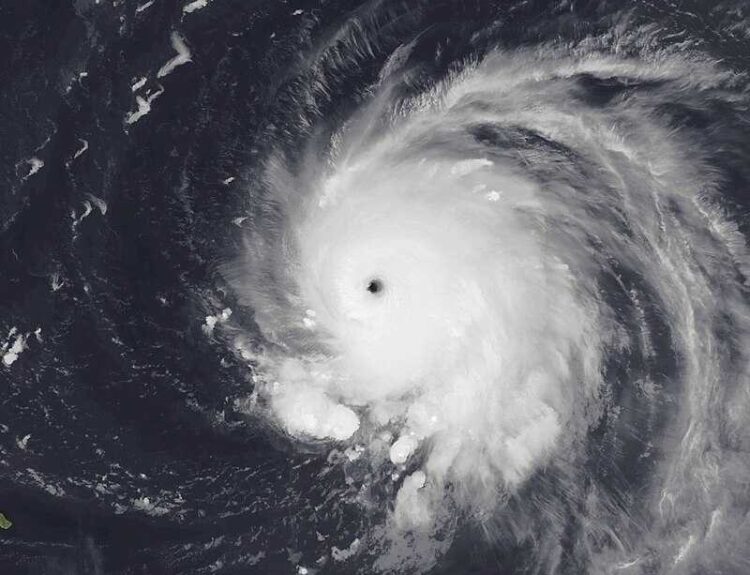Discoveries of carbon dioxide and hydrogen peroxide reshape our understanding of Charon’s icy surface.
- James Webb Space Telescope detects carbon dioxide and hydrogen peroxide on Charon.
- Findings help understand the formation of Charon and other icy bodies in the solar system.
- Charon’s surface composition was previously limited due to wavelength restrictions in earlier studies.
- The presence of carbon dioxide and hydrogen peroxide indicates geological processes at work.
- Charon is a key target for studying mid-sized trans-Neptunian objects due to its unique surface features.
Astronomers using the James Webb Space Telescope (JWST) have made groundbreaking discoveries on Charon, Pluto’s largest moon, by detecting carbon dioxide and hydrogen peroxide on its frozen surface. These findings are crucial for understanding how Charon and similar icy bodies in the solar system were formed. Since its discovery in 1978, Charon has been the subject of extensive research, but previous studies were limited by the wavelengths of light that could be analyzed, leaving gaps in knowledge about its surface composition. While scientists had previously identified water ice, ammonia-bearing compounds, and organic materials on Charon, the detection of carbon dioxide and hydrogen peroxide had eluded them until now. Led by Silvia Protopapa from the Southwest Research Institute, the research team utilized the JWST’s Near-Infrared Spectrograph (NIRSpec) to fill these gaps. Protopapa stated, ‘Our research reveals that Charon’s surface preserves evidence of its formation through the presence of carbon dioxide, as well as signs of irradiation processes, indicated by the presence of hydrogen peroxide.’ Charon, measuring about 750 miles (1,207 kilometers) wide, is located in the Kuiper Belt, a region filled with icy debris and dwarf planets. Unlike many larger Kuiper Belt objects, Charon’s surface is not obscured by volatile ices, providing scientists with valuable insights into the effects of sunlight and cratering on distant bodies. Additionally, Charon is the only mid-sized trans-Neptunian object with available geological mapping, thanks to data from NASA’s New Horizons mission. Protopapa emphasized the importance of Charon as a target for research, stating, ‘Our findings provide valuable insights into how processes such as sunlight exposure and cratering shape the surface of Charon and, by extension, other mid-sized icy bodies beyond Neptune’s orbit.’ The composition of celestial bodies can be determined through spectroscopy, which analyzes the light they emit or reflect. By comparing JWST observations with laboratory measurements, the team concluded that carbon dioxide primarily exists as a surface layer over a water-ice-rich subsurface. Protopapa explained that the surface features of Charon, including craters surrounded by bright ejecta, suggest that materials from beneath the surface have been exposed by impacts. The detection of carbon dioxide was anticipated, as it is known to be present in the protoplanetary disk from which the Pluto system formed. However, the discovery of hydrogen peroxide was unexpected. Protopapa noted, ‘I never imagined I would be writing a paper comparing these icy satellites, Charon and Europa, given how different their environments are.’ The presence of hydrogen peroxide indicates that Charon’s surface is actively altered by ultraviolet light from the sun and energetic particles from the solar wind. The team plans to continue studying Charon with the JWST, aiming to uncover more about icy trans-Neptunian objects. Protopapa mentioned that future observations could lead to new discoveries and expand Charon’s chemical inventory. The research was published in the journal Nature Communications on October 1.·
Factuality Level: 8
Factuality Justification: The article provides a detailed account of the findings related to Charon’s surface composition, supported by quotes from a leading researcher and references to scientific methods. However, it includes some background information that, while relevant, could be seen as slightly tangential to the main discovery. Overall, the article is well-researched and presents factual information without significant bias or sensationalism.·
Noise Level: 9
Noise Justification: The article provides a detailed and scientifically rigorous analysis of the findings related to Charon’s surface composition, including the detection of carbon dioxide and hydrogen peroxide. It discusses the implications of these findings for understanding the formation and alteration of icy bodies in the solar system. The article stays on topic, supports its claims with evidence from the JWST observations, and offers insights into future research directions, making it highly informative and relevant.·
Public Companies: NASA (N/A)
Private Companies: Southwest Research Institute
Key People: Silvia Protopapa (Lead Researcher)
Financial Relevance: No
Financial Markets Impacted: No
Financial Rating Justification: The article discusses scientific discoveries made using the James Webb Space Telescope regarding the detection of carbon dioxide and hydrogen peroxide on Pluto’s moon, Charon. This information does not have any direct impact on financial markets or companies.
Presence Of Extreme Event: No
Nature Of Extreme Event: No
Impact Rating Of The Extreme Event: No
Extreme Rating Justification: The article discusses scientific discoveries related to the composition of Charon, but it does not report on any extreme events that occurred in the last 48 hours.·
Move Size: No market move size mentioned.
Sector: All
Direction: Up
Magnitude: Small
Affected Instruments: Stocks, Bonds
 www.space.com
www.space.com 





